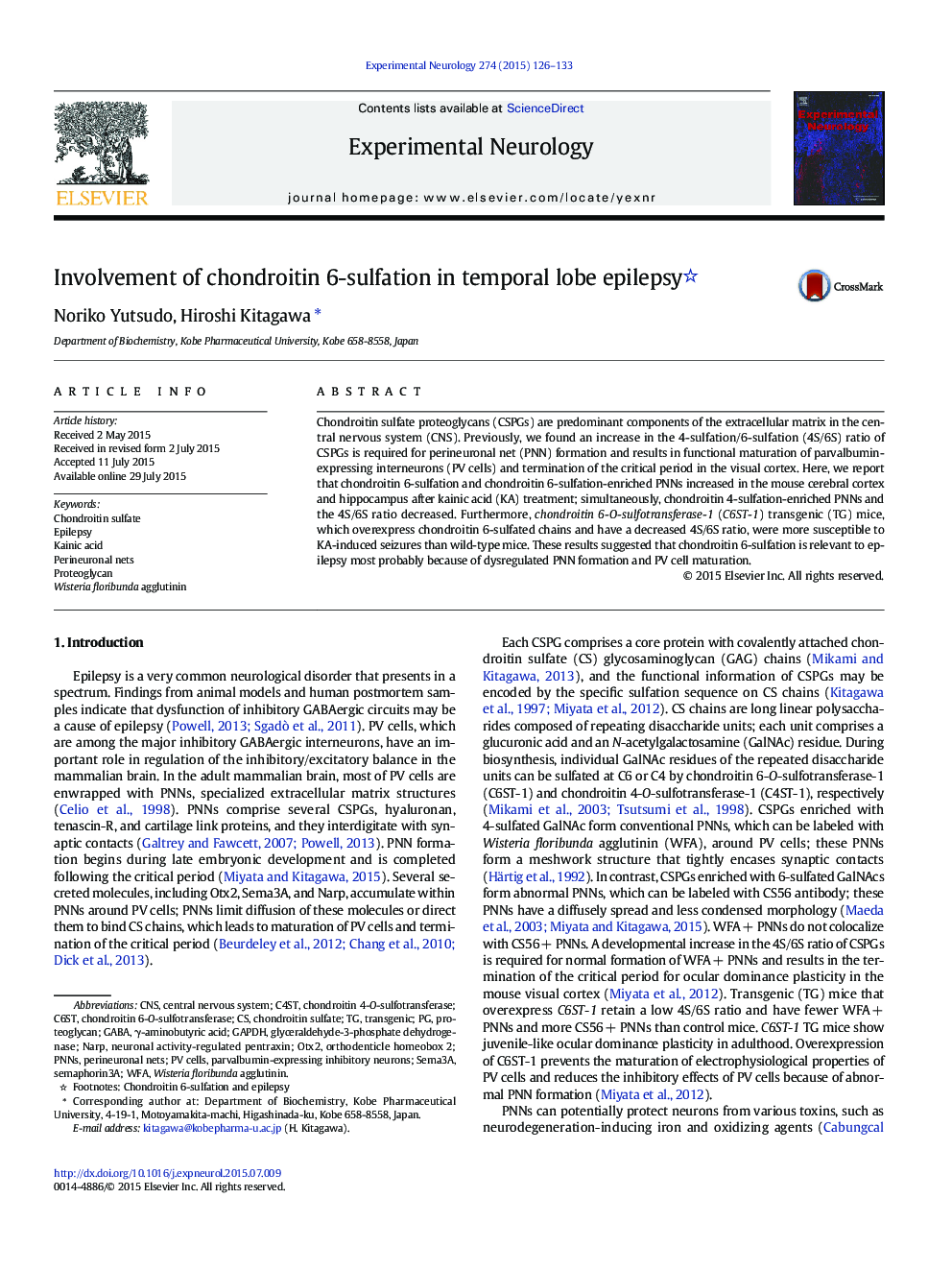| Article ID | Journal | Published Year | Pages | File Type |
|---|---|---|---|---|
| 3055338 | Experimental Neurology | 2015 | 8 Pages |
•Kainic acid (KA) treatment increases chondroitin 6-sulfation in the cerebral cortex.•KA treatment decreases WFA-positive perineuronal nets in the cerebral cortex.•Mice overexpressing chondroitin 6-sulfated chains are more susceptible to seizures.•Chondroitin 6-sulfated chains have an important role in epilepsy.
Chondroitin sulfate proteoglycans (CSPGs) are predominant components of the extracellular matrix in the central nervous system (CNS). Previously, we found an increase in the 4-sulfation/6-sulfation (4S/6S) ratio of CSPGs is required for perineuronal net (PNN) formation and results in functional maturation of parvalbumin-expressing interneurons (PV cells) and termination of the critical period in the visual cortex. Here, we report that chondroitin 6-sulfation and chondroitin 6-sulfation-enriched PNNs increased in the mouse cerebral cortex and hippocampus after kainic acid (KA) treatment; simultaneously, chondroitin 4-sulfation-enriched PNNs and the 4S/6S ratio decreased. Furthermore, chondroitin 6-O-sulfotransferase-1 (C6ST-1) transgenic (TG) mice, which overexpress chondroitin 6-sulfated chains and have a decreased 4S/6S ratio, were more susceptible to KA-induced seizures than wild-type mice. These results suggested that chondroitin 6-sulfation is relevant to epilepsy most probably because of dysregulated PNN formation and PV cell maturation.
